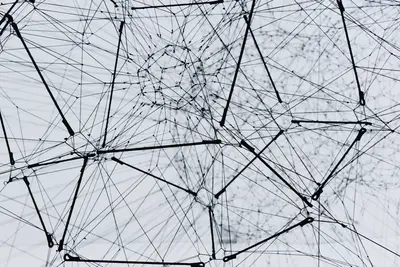🌐 Network Forensics and Packet Analysis on AlmaLinux: Becoming a Network Detective!
Ever wondered what secrets are flowing through your network cables? 🕵️♂️ Network forensics is like being a detective for internet traffic - you can see EVERYTHING that goes in and out of your network! From secret communications to malicious attacks, network packets tell the whole story. Today we’re turning you into a network Sherlock Holmes on AlmaLinux! Let’s intercept some digital conversations! 📡🔍
🤔 Why is Network Forensics Important?
Your network is like a busy highway with millions of cars (packets) carrying secret messages! Network forensics lets you read those messages and catch the bad guys! 🚗💨
Here’s why network forensics is absolutely ESSENTIAL:
- 🕵️ Incident investigation - See exactly what attackers did over the network
- 🔍 Malware detection - Catch malicious communications and command & control
- 📊 Data exfiltration - Detect when sensitive data leaves your network
- 🌐 Attack reconstruction - Replay entire attack sequences
- 🛡️ Threat hunting - Proactively search for suspicious activities
- ⚖️ Legal evidence - Provide courtroom-ready network evidence
- 🔐 Protocol analysis - Understand how applications really communicate
🎯 What You Need
Before we start intercepting network traffic, make sure you have:
✅ AlmaLinux 9 system with root access
✅ Network interface access - Ability to capture packets
✅ At least 10GB free space - For storing packet captures
✅ Basic networking knowledge - Understand IP addresses and ports
✅ Wireshark experience - Or willingness to learn the best tool ever!
✅ Detective curiosity - Ready to solve network mysteries! 🕵️♀️
📝 Step 1: Installing Network Forensics Tools
Let’s build your network detective toolkit! We need the best packet analysis tools available:
# Update system first (always start fresh!)
sudo dnf update -y
# Install Wireshark and related tools
sudo dnf install wireshark wireshark-cli -y
# Install tcpdump for command-line packet capture
sudo dnf install tcpdump -y
# Install network analysis utilities
sudo dnf install nmap netcat-openbsd tshark -y
# Install additional forensic tools
sudo dnf install ettercap ettercap-gtk aircrack-ng -y
# Add your user to wireshark group for packet capture
sudo usermod -a -G wireshark $USER
# You need to log out and back in for group changes to take effect
echo "🔓 Please log out and log back in to capture packets!"
# Verify installations
wireshark --version
tcpdump --version
echo "🌐 Network forensics toolkit installed!"🎉 Awesome! You now have professional-grade network analysis tools!
🔧 Step 2: Basic Packet Capture with tcpdump
tcpdump is like having super-hearing for network traffic - it can hear every digital whisper! Let’s learn to use it:
# Create forensics working directory
mkdir -p ~/network-forensics/captures
cd ~/network-forensics/captures
# Basic packet capture (capture 100 packets)
sudo tcpdump -c 100 -w basic-capture.pcap
# Capture packets on specific interface
sudo tcpdump -i eth0 -c 50 -w interface-capture.pcap
# Capture with timestamps and readable output
sudo tcpdump -tttt -v -i any host 8.8.8.8
# Capture HTTP traffic only (super useful!)
sudo tcpdump -i any 'port 80 or port 443' -w http-traffic.pcap
# Capture with size limit (100MB max)
sudo tcpdump -i any -C 100 -w rotating-capture.pcap
echo "📡 Basic packet capture complete!"💡 Pro Tip: Always save packet captures to files (.pcap) so you can analyze them later with Wireshark!
🌟 Step 3: Advanced Packet Analysis with Wireshark
Wireshark is like having X-ray vision for network packets - it shows you EVERYTHING inside! Let’s analyze some traffic:
# Start Wireshark GUI (if you have desktop environment)
wireshark &
# For command-line analysis, use tshark
# Analyze HTTP traffic from capture file
tshark -r http-traffic.pcap -Y "http"
# Extract HTTP requests and responses
tshark -r http-traffic.pcap -Y "http.request" -T fields -e http.request.method -e http.request.uri
# Look for suspicious DNS queries
tshark -r basic-capture.pcap -Y "dns" -T fields -e dns.qry.name
# Find all unique IP addresses in capture
tshark -r basic-capture.pcap -T fields -e ip.src -e ip.dst | sort -u
# Extract files transferred over HTTP
tshark -r http-traffic.pcap --export-objects http,extracted-files/
echo "🔍 Advanced packet analysis complete!"✅ Step 4: Network Forensics Investigation Techniques
Now for the REALLY cool detective work! Let’s investigate network incidents:
# Timeline analysis - see what happened when
tshark -r basic-capture.pcap -t ad -T fields -e frame.time -e ip.src -e ip.dst -e frame.protocols
# Protocol hierarchy - understand traffic composition
tshark -r basic-capture.pcap -q -z io,phs
# Conversation analysis - who talked to whom
tshark -r basic-capture.pcap -q -z conv,ip
# Find long-lived connections (potential backdoors)
tshark -r basic-capture.pcap -Y "tcp.flags.syn==1 and tcp.flags.ack==0" -T fields -e ip.src -e ip.dst -e tcp.dstport
# Look for data exfiltration (large outbound transfers)
tshark -r basic-capture.pcap -Y "ip.len > 1400" -T fields -e ip.src -e ip.dst -e ip.len
# Search for passwords in cleartext
tshark -r basic-capture.pcap -Y "ftp or telnet or http.authbasic" -V
echo "🕵️ Network investigation techniques mastered!"🎮 Quick Examples: Real Network Investigations
Example 1: Detecting Malware Communication
# Look for suspicious DNS queries to malicious domains
tshark -r suspicious-traffic.pcap -Y "dns.qry.name contains evil"
# Find beaconing behavior (regular intervals)
tshark -r suspicious-traffic.pcap -Y "http" -T fields -e frame.time -e ip.dst -e http.request.uri
# Detect command and control traffic
tshark -r suspicious-traffic.pcap -Y "tcp.port == 4444 or tcp.port == 1337"
# Look for encoded data in HTTP
tshark -r suspicious-traffic.pcap -Y "http.request.method == POST" -T fields -e http.file_data
echo "🦠 Malware communication detected!"Example 2: Investigating Data Exfiltration
# Find large outbound data transfers
tshark -r data-transfer.pcap -Y "tcp.len > 1000" -T fields -e ip.src -e ip.dst -e tcp.len | sort -k3 -nr
# Look for file transfers over HTTP
tshark -r data-transfer.pcap -Y "http.request.method == POST" -T fields -e http.host -e http.request.uri
# Detect FTP file transfers
tshark -r data-transfer.pcap -Y "ftp-data"
# Check for encrypted tunnels
tshark -r data-transfer.pcap -Y "ssl.handshake.type == 1" -T fields -e ip.dst -e ssl.handshake.extensions.server_name
echo "📤 Data exfiltration investigation complete!"Example 3: Password and Credential Hunting
# Extract HTTP authentication
tshark -r credentials.pcap -Y "http.authbasic" -T fields -e ip.src -e ip.dst -e http.authbasic
# Find FTP login attempts
tshark -r credentials.pcap -Y "ftp.request.command == USER or ftp.request.command == PASS"
# Look for telnet passwords (super insecure!)
tshark -r credentials.pcap -Y "telnet" -x
# Extract SMTP authentication
tshark -r credentials.pcap -Y "smtp.auth.credential"
echo "🔑 Credential hunting complete!"🚨 Fix Common Problems
Problem 1: “Permission denied” for Packet Capture
# Error: You need permissions to capture packets
# Solution: Add user to correct groups and set capabilities
sudo usermod -a -G wireshark $USER
sudo setcap cap_net_raw,cap_net_admin=eip /usr/bin/tcpdump
# Or run with sudo temporarily
sudo tcpdump -i any -c 10
echo "✅ Packet capture permissions fixed!"Problem 2: Interface Not Found
# Error: Cannot find network interface
# Solution: List available interfaces
# Show all network interfaces
ip link show
# Use tcpdump to see available interfaces
tcpdump -D
# Capture on all interfaces
sudo tcpdump -i any -c 10
echo "🔧 Interface detection fixed!"Problem 3: Capture Files Too Large
# Error: Packet captures filling up disk space
# Solution: Use file rotation and filtering
# Rotate capture files at 100MB
sudo tcpdump -i any -C 100 -W 5 -w rotating-%d.pcap
# Filter to capture only specific traffic
sudo tcpdump -i any 'host 192.168.1.100' -w filtered.pcap
# Limit capture size
sudo tcpdump -i any -c 1000 -w limited.pcap
echo "💾 Storage optimization complete!"Problem 4: Wireshark Won’t Start
# Error: GUI applications won't start
# Solution: Check X11 forwarding and display
# For SSH connections, enable X11 forwarding
ssh -X user@almalinux-server
# Set display environment
export DISPLAY=:0
# Use command-line alternative
tshark -r capture.pcap -Y "http"
echo "🖥️ Display issues resolved!"📋 Simple Commands Summary
| Tool/Command | What It Does | When to Use It |
|---|---|---|
tcpdump -i any -w file.pcap | Capture all network traffic | Initial packet collection |
tshark -r file.pcap -Y "filter" | Analyze with display filters | Traffic analysis |
tshark -q -z conv,ip | Show IP conversations | Understanding network flows |
tshark -T fields -e field.name | Extract specific fields | Data extraction |
wireshark file.pcap | GUI analysis | Detailed packet inspection |
tcpdump port 80 | Capture specific port | Protocol-specific capture |
tshark --export-objects http,dir/ | Extract HTTP objects | File recovery |
💡 Tips for Success
🔍 Capture Early: Start capturing as soon as you suspect an incident
📊 Use Filters: Focus your analysis with display and capture filters
⏰ Timeline Analysis: Always correlate packets with system logs
💾 Save Everything: Keep raw packet captures as evidence
🎯 Focus Investigation: Start broad, then narrow down to specifics
🔐 Handle Sensitively: Network captures may contain private data
📝 Document Findings: Record all analysis steps and discoveries
🔄 Practice Regularly: Analyze normal traffic to recognize anomalies
🏆 What You Learned
Incredible network detective work! You’ve mastered network forensics on AlmaLinux! Here’s your new digital superpowers:
✅ Packet Capture - Can intercept and store network communications
✅ Traffic Analysis - Expert at reading network conversations
✅ Protocol Decoding - Understand what applications are really doing
✅ Malware Detection - Can spot suspicious network behaviors
✅ Data Exfiltration - Know how to catch data theft attempts
✅ Credential Hunting - Master of finding leaked passwords
✅ Timeline Reconstruction - Can replay entire network incidents
✅ Professional Techniques - Use industry-standard forensic methods
🎯 Why This Matters
Network forensics is the ultimate cybersecurity investigation skill! You now have:
🕵️ Complete visibility into your network communications and threats
🔍 Advanced detection capabilities for sophisticated network attacks
📊 Evidence collection skills for legal and compliance requirements
🌐 Deep understanding of how network protocols actually work
⚖️ Investigation abilities that can solve complex cyber crimes
Your AlmaLinux system is now a network forensics laboratory! You can investigate any network incident, detect hidden threats, and uncover the truth about what’s happening on your network. You’ve gained one of the most valuable cybersecurity skills!
Keep analyzing, keep learning, and remember - every packet tells a story, and now you know how to read them all! 🌟🙌
Happy packet hunting, network detective! ⭐




